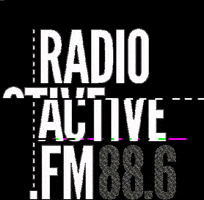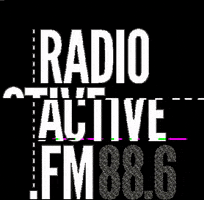

History of Nuclear Testing
in the Marshall Islands:
Questions about "Bravo"


"Bravo" was the world's first deliverable hydrogen bomb detonated on Bikini Atoll,
March 1, 1954 and was 1,200 times larger [15 megatons] than the Hiroshima atomic
bomb [12.5 kilotons]. Questions remain surrounding the "accidental" irradiation of
downwind Marshall Islanders and inhabited islands during the testing years 1946-58.
When the finished products of the Manhattan Project destroyed the Japanese cities of Hiroshima and Nagasaki in 1945, the Nuclear Age was officially upon us. The United States held a monopoly on nuclear weapons until the former Soviet Union exploded its first atomic bomb - Little Joe - in 1949 which sent shock waves throughout the U.S. military and intelligence establishment. The decision was made to proceed with all due haste with the second generation of nuclear weapons - thermonuclear or hydrogen bombs.
After successfully destroying the career of former Manhattan Project head Robert Oppenheimer, physicist Edward Teller [below] led the effort to build the H-bomb, including Castle-Bravo in 1954. Teller referred to Bravo as the "Shrimp" because it was the world's first miniaturized and deliverable H-bomb that could be dropped by plane on an enemy.
The successful scientific "evolution" between the 1952 "Mike" H-bomb test at Enewetak [7.5 megatons or about 600 Hiroshima-sized atomic bombs] - necessitated an 88-ton refrigeration unit to keep the liquid lithium-deuteride fuel below room temperature.
For "Bravo" in 1954 Teller utilized the Teller-Ulam design plus discovering how to make the lithium-deuteride fuel into a solid that would remain stable at room temperature. Teller purposely designed Bravo to produce maximum radioactive fallout . . . There was no data about how radioactive fallout from H-bombs affects humans and their environment in early 1954 as the Cold War was heating up. Enter the downwind Marshallese and Project 4.1:

Physicist Edward Teller, known as the "father of the H-bomb," and the man who destroyed the Manhattan Project director Robert Oppen-heimer was obsessed with building the "Super" or H-bomb and was the designer of Bravo.

A cross-section of Bravo utilizing the Teller-Ulam H-bomb design. The Primary is an A-bomb which ignites the fusion chain reaction for the Secondary. The red fusion fuel is solid lithium-deuteride which accounted for 80% of the radioactive fallout from Bravo.

"Bravo" nearing completion at the Lawrence Livermore Laboratory in California
in late 1953. The all-aluminum casing reduced the weight of Bravo. Bravo was
the world's first deliverable H-bomb.


"Bravo," the finished product
"Bravo" was detonated atop this
100-foot steel tower on Bikini

The fallout pattern for Bravo. The people of Rongelap received 175 rads of whole-body gamma exposure living 120 miles downwind from ground zero. Utrik recieved 18 rads at 320 miles downwind from Bikini and had a higher rate of thyroid cancer than the people of Rongelap. This finding suggested that low dose ionizing radiation is far more deleterious to human health than previously believed.

This screenshot from a 1955 Atomic Energy Commission [AEC] film depicts what would happen if the former Soviet Union dropped a "Bravo"-sized hydrogen bomb on Washington, D.C. with the radioactive fallout spreading up the Eastern Seaboard and irradiating 15% of the U.S. population. The "Bravo" fallout imprint [in purple] has been superimposed on a map of the East Coast in the 1955 AEC film, indicating exactly what "Bravo" was all about: Collecting human and environmental data about the short, intermediate and long-term effects of radioactive fallout on humans at the height of the Cold War with the former Soviet Union. The AEC called this human experiment "Project 4.1" [See Adam Horowitz's excellent 90-minute award-winning documentary titled "Nuclear Savages: Project 4.1." Go here: https://www.youtube.com/watch?v=wqdRIt1EnkY



The 1.3 mile-wide crater from Bravo on March 1, 1954 at Bikini Atoll. The mushroom cloud reached a height of 130,000 feet into the stratosphere and spread the radioactive fallout around the entire Earth for many years. A meterologist for the Atomic Energy Commission testified before a joint session of Congress in 1957 and said that "Americium-241 and Strontium-90 were still falling back to Earth from Castle-Bravo three years previously in 1954." The people of Bikini Atoll were told during their forced evacuation in 1946 that their move would be "temporary." That the people of Bikini have yet to return home gives new meaning to the word "temporary" while they continue to suffer on Kili Island, known infamously as "jiken callabuj" [lit. "the prison"].



Epilation, or hair loss [L] occurred after 28 days and beta burns [C[ occurred after 40 days among the highly exposed Rongelap Islanders following the fallout from Bravo. These along with decreased blood cell counts, nausea, and itching and burning of the skin accounted for the acute effects of radiation exposure. A crew member [R] of the "Lucky Dragon" showing epilation and beta burns 38 days post-Bravo.



These are the children [F2 generation] of exposed Rongelap Islanders. According to the people of the Marshall Islands - and especially the women and mid-wives - babies like these were seldom seen before the testing of nuclear weapons in their islands between 1946-58.
"A-bomb damage, then, is so complex and extensive that it cannot be reduced to any single characteristic or problem. It must be seen overall, as an inter-related array – massive physical and human loss, social disintegration, and psychological and spiritual shock – that affects all life and society. Only then can one grasp the seriousness of its total impact on the biological systems that sustain life and health, on the social systems that enable people to live and work together, and on the mental functions that hold these two dimensions in integrated unity. The essence of atomic destruction lies in the totality of its impact on man and society and on all the systems that affect their mutual continuation."
- Hiroshima and Nagasaki: The Physical, Medical and Social Effects of the Atomic Bombings by the
Committee on Hiroshima & Nagasaki. 1981. Basic Books.
Listen to the 6-minute 1986 NPR interview [above] with Dennis O'Rourke about "Half Life"
Dennis O'Rourke's classic 1986 film "Half Life" [above] is THE best film about nuclear testing in the Marshall Islands. [Note: I worked on the film so I am completely without bias]. This YouTube version has Italian sub-titles but the audio is in English. This rare video begins at 15 minutes in, so please excuse the silly first fifteen minutes of an important video, otherwise unobtainable.







